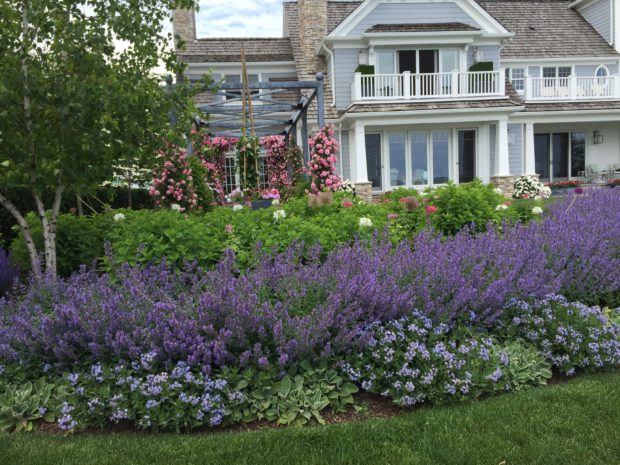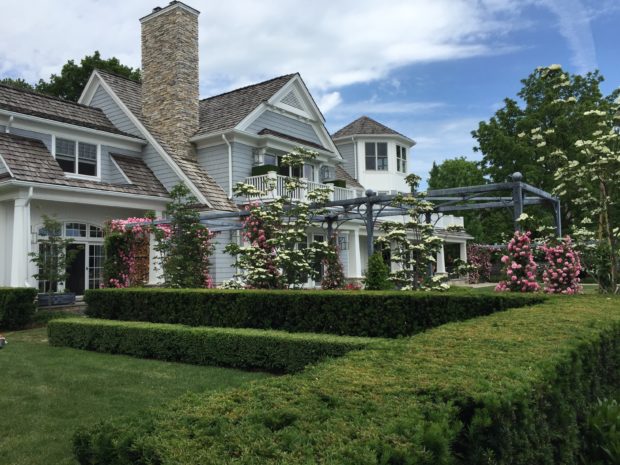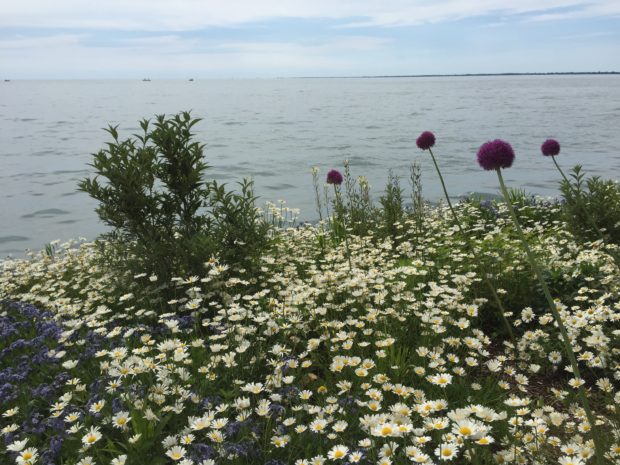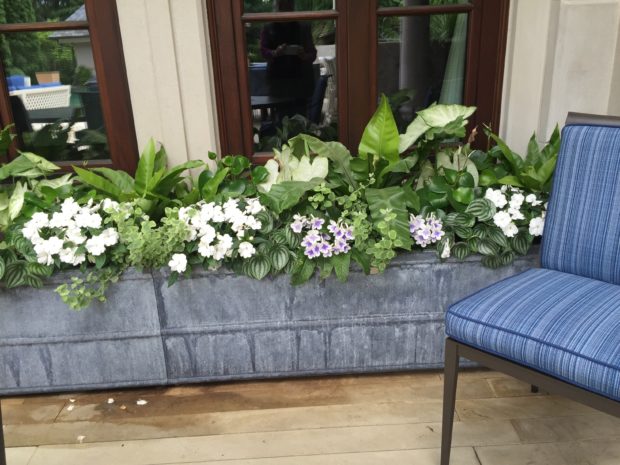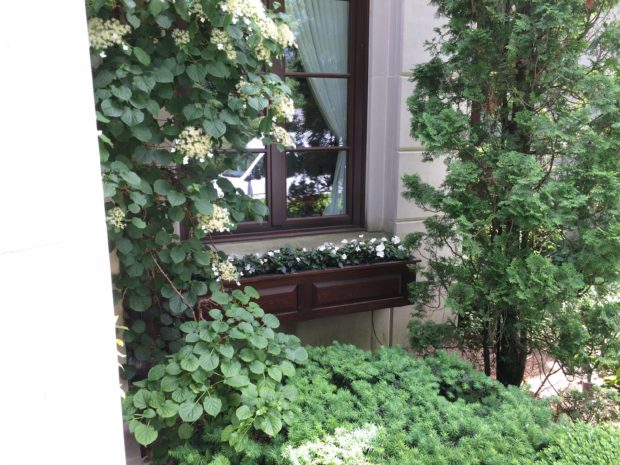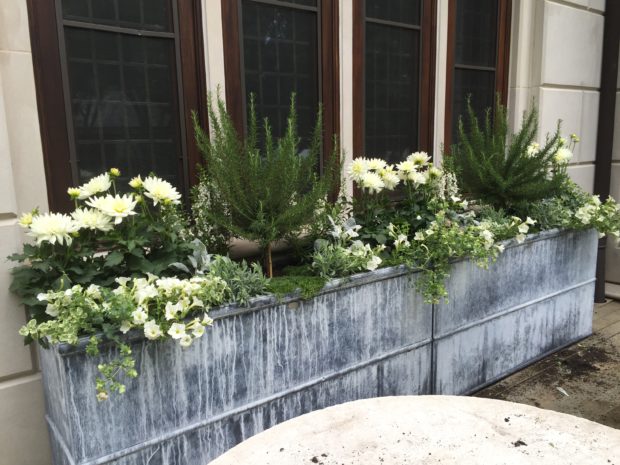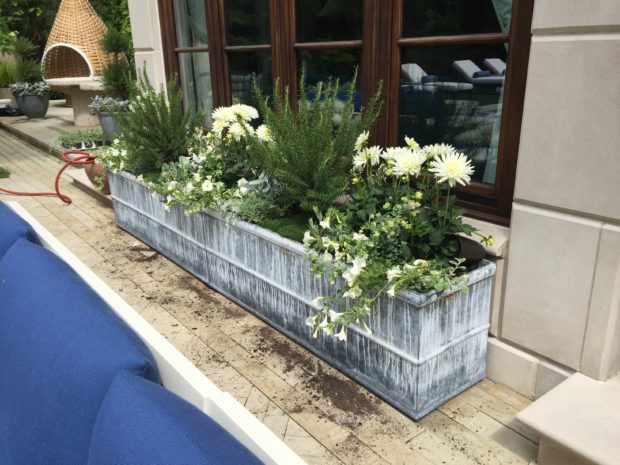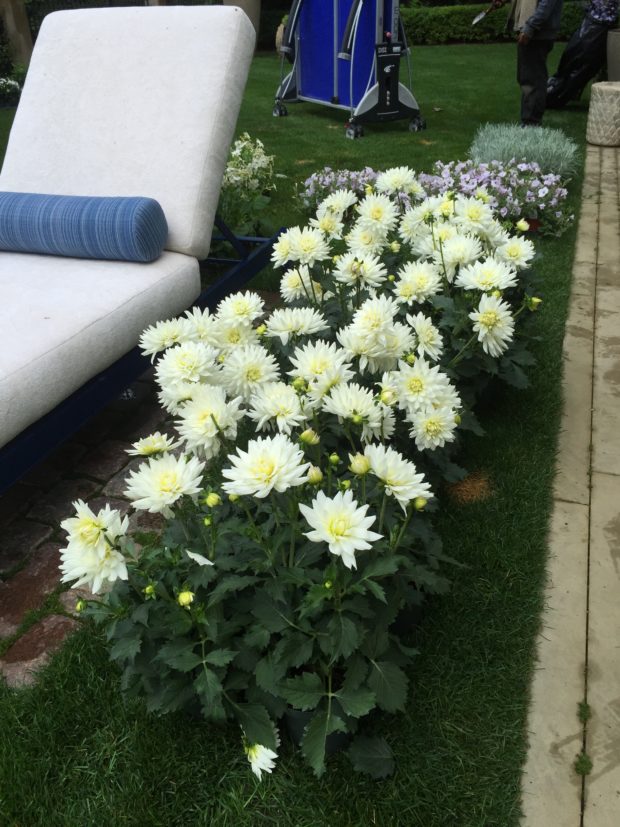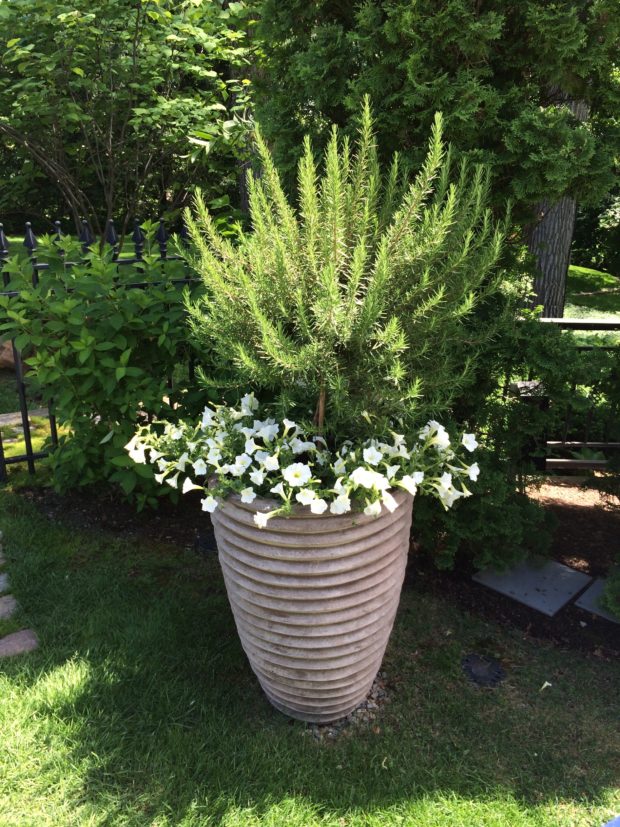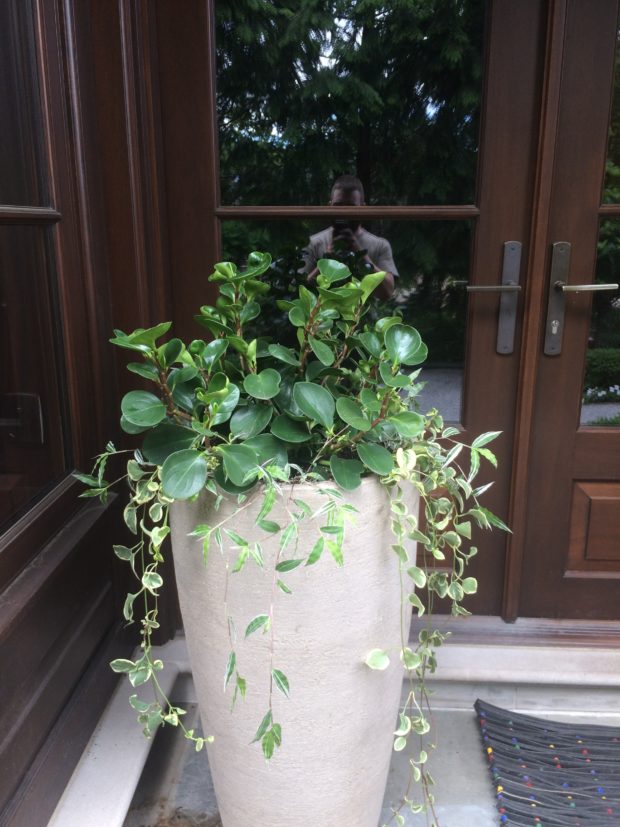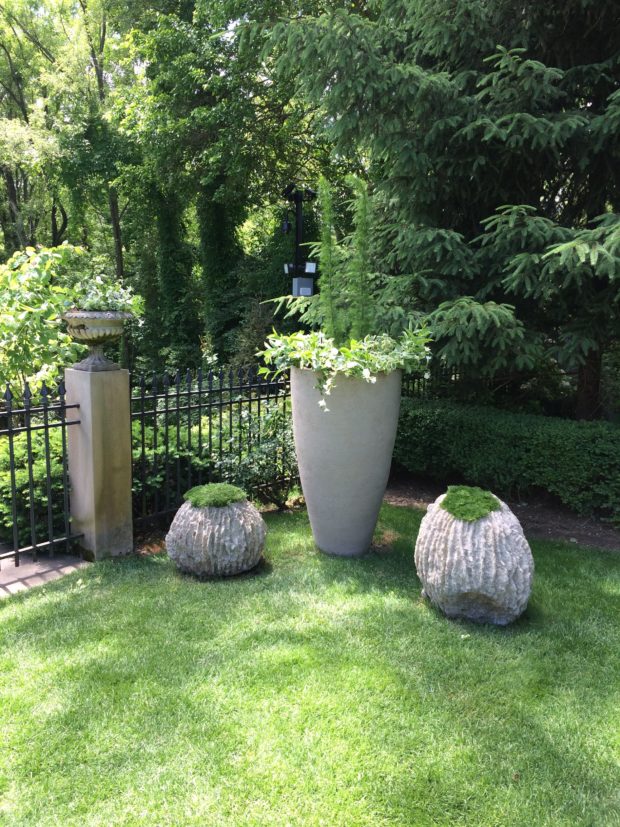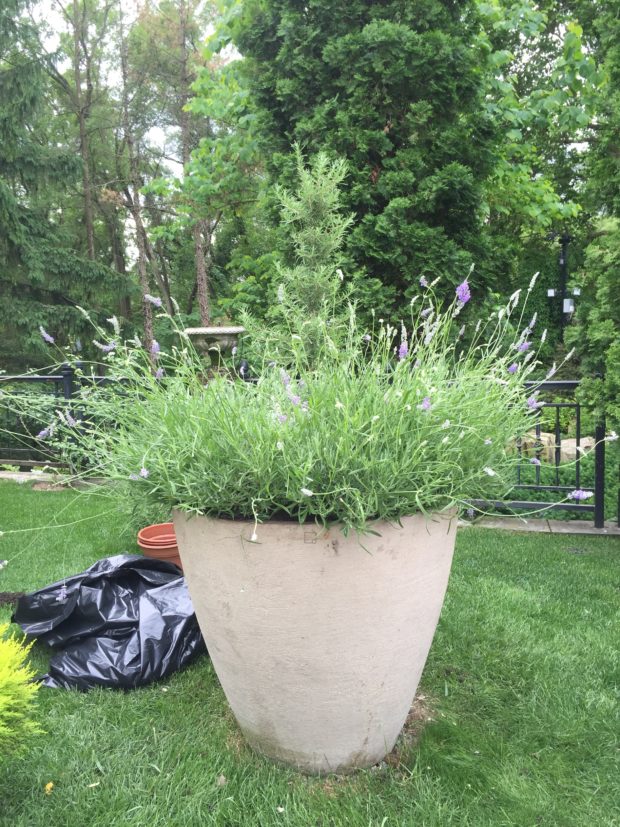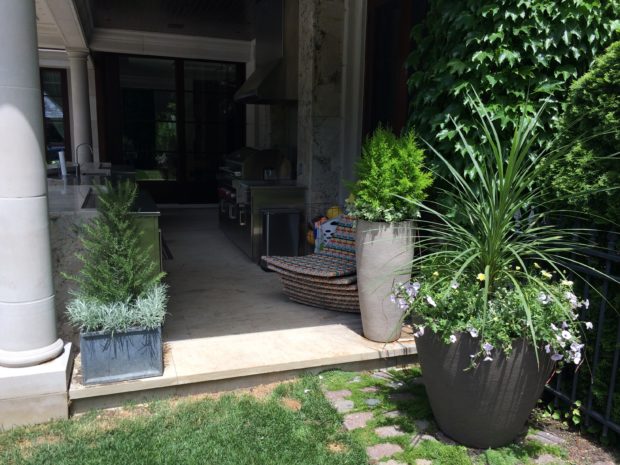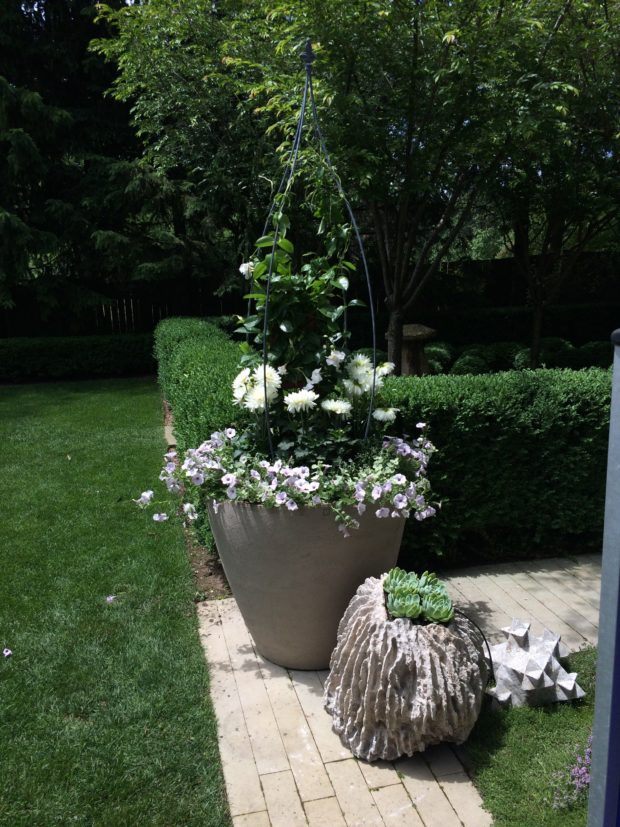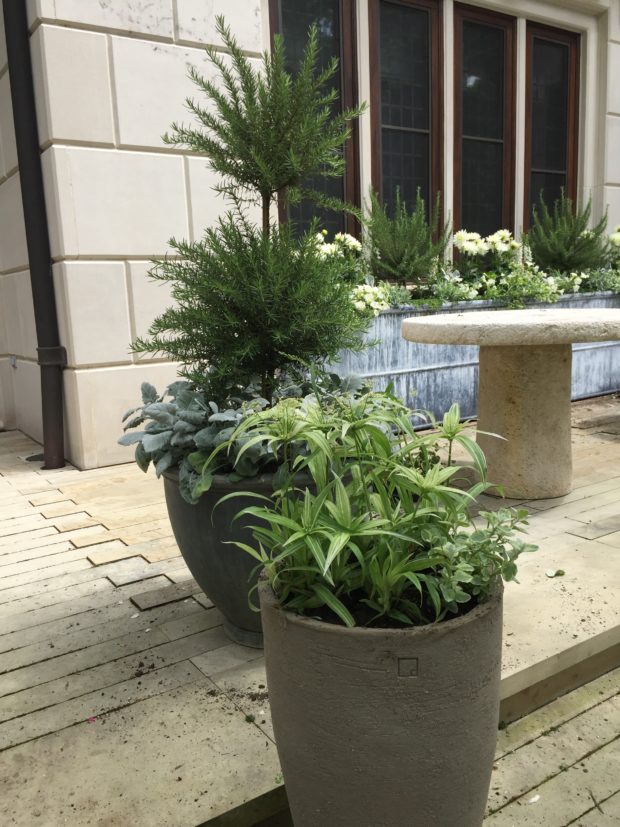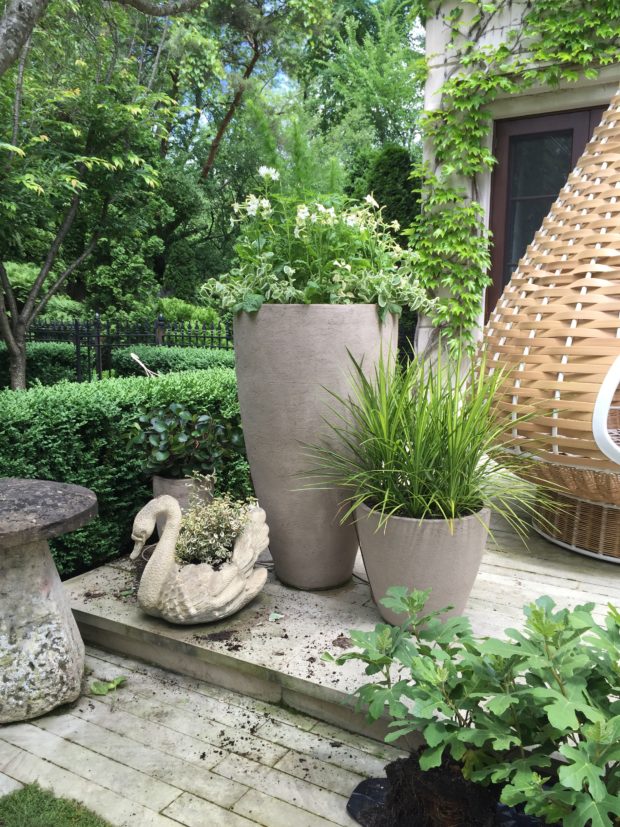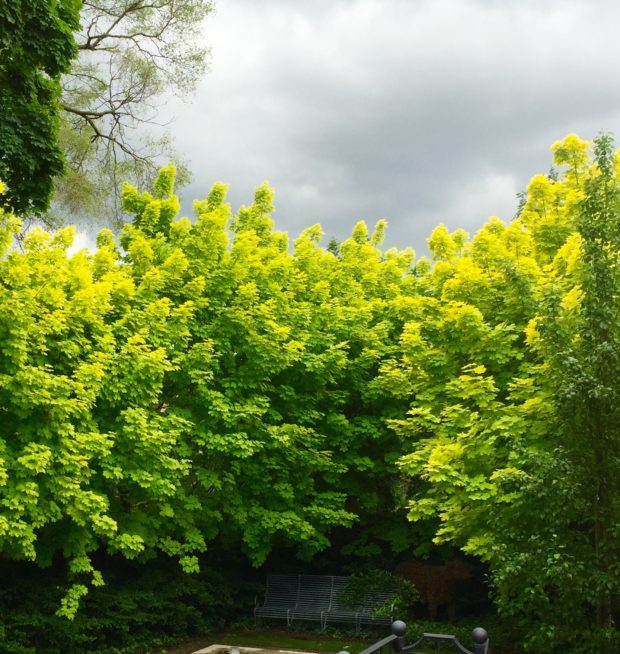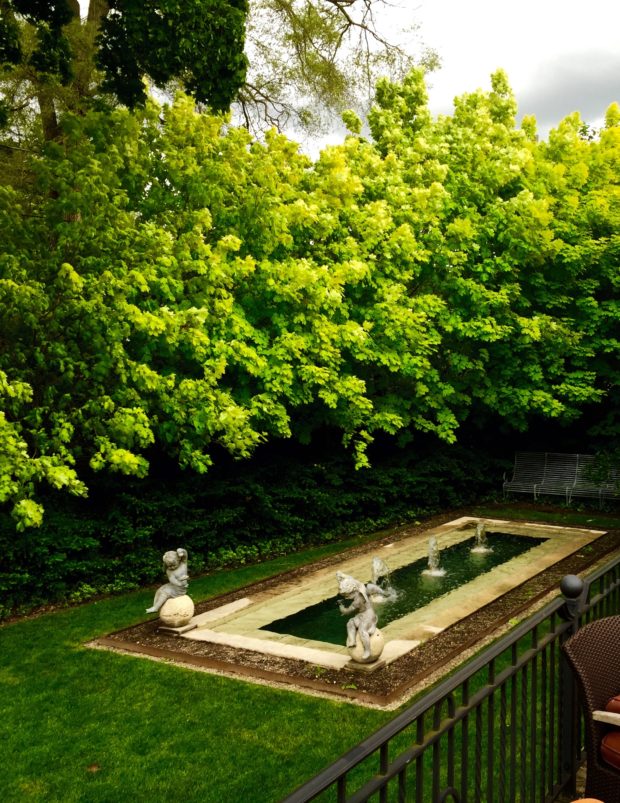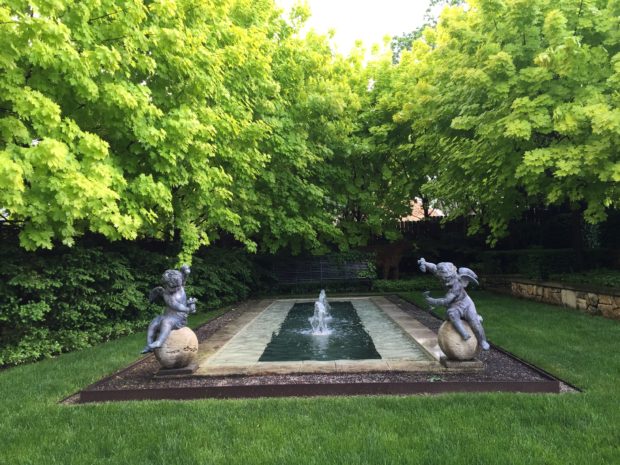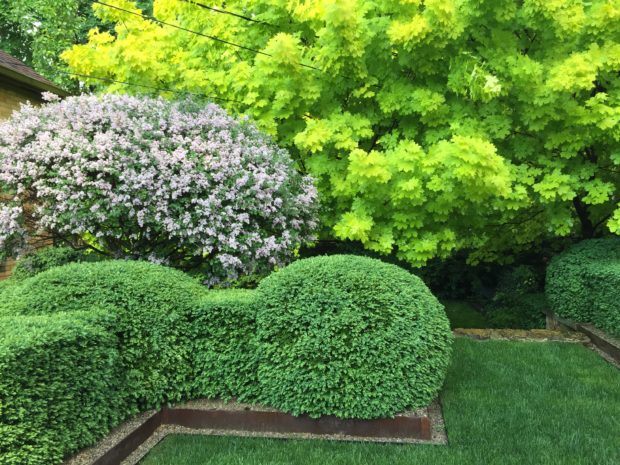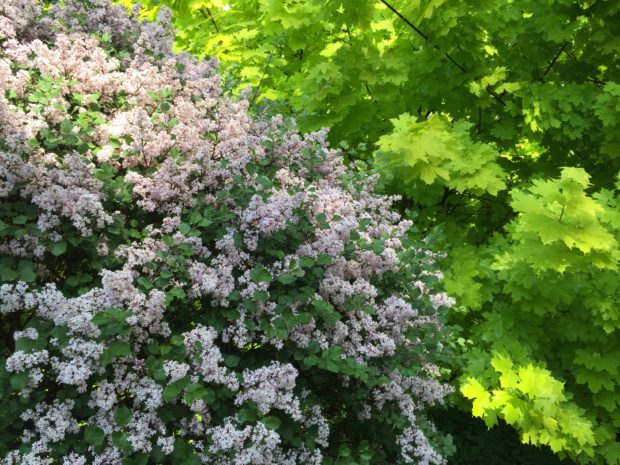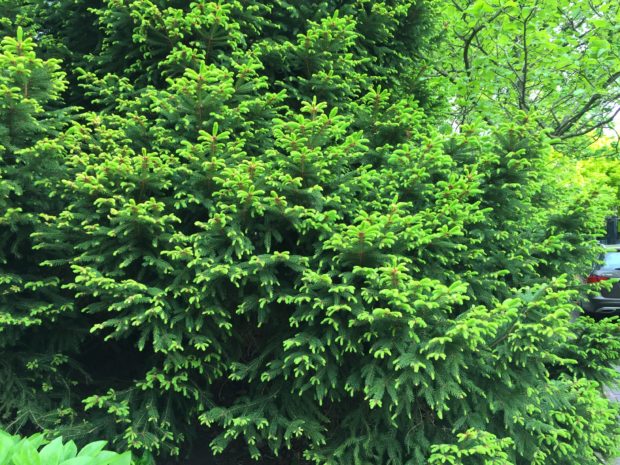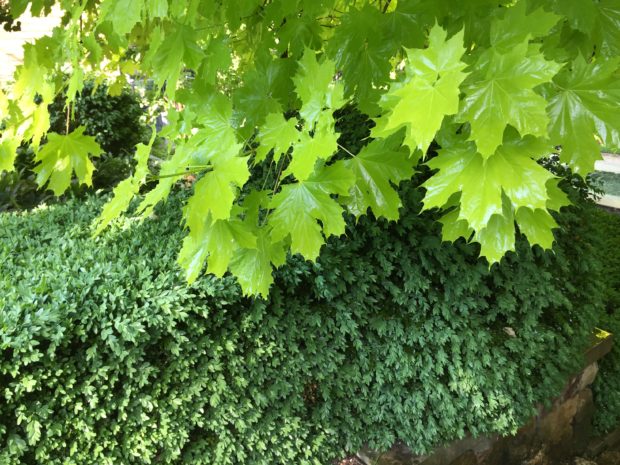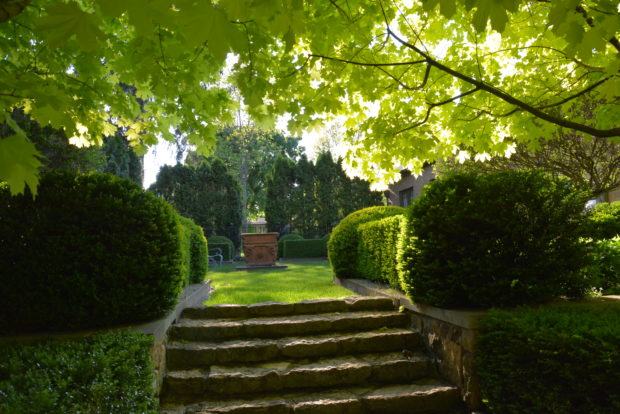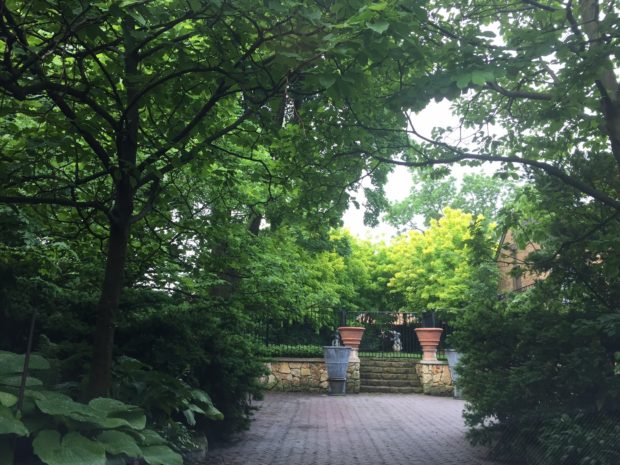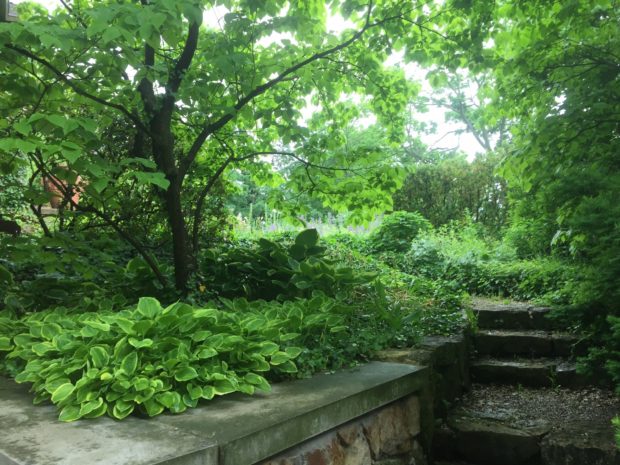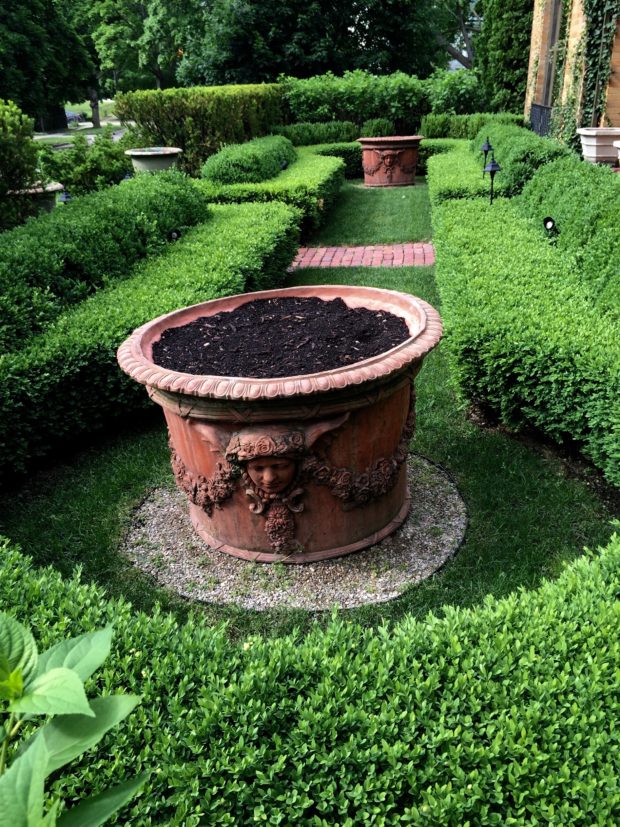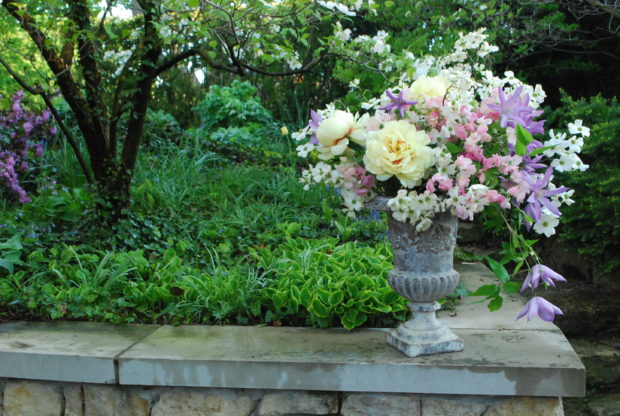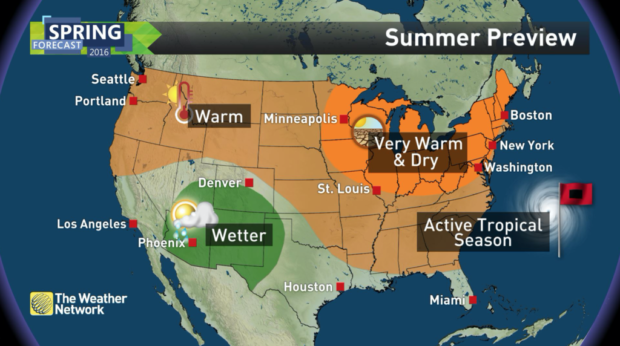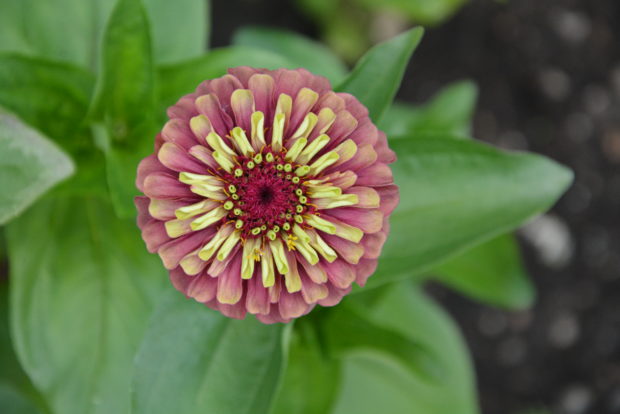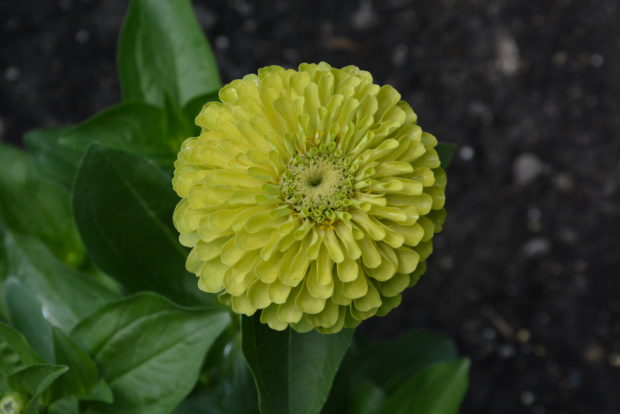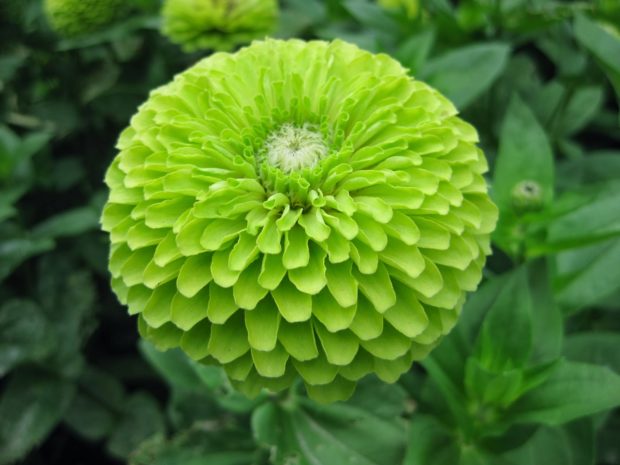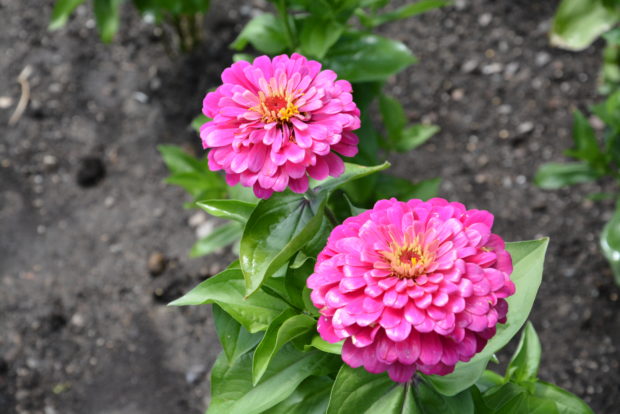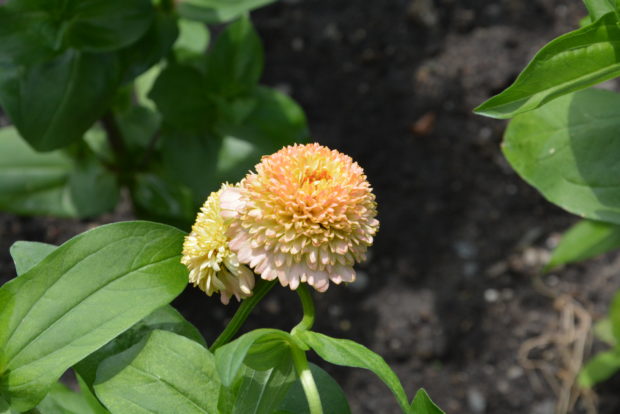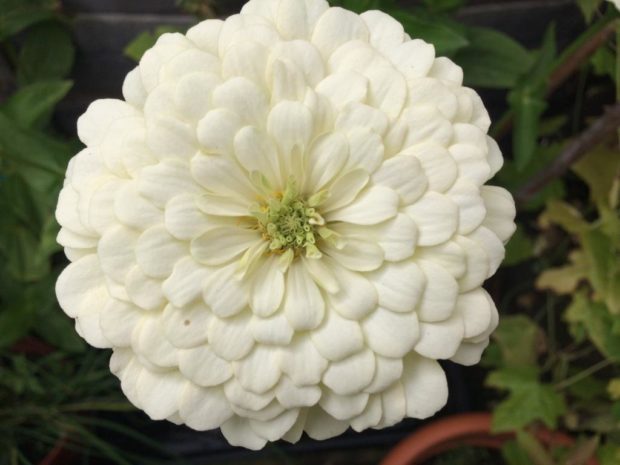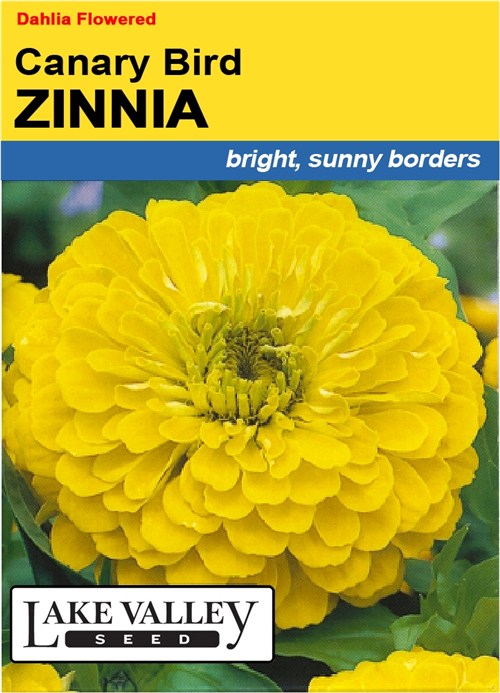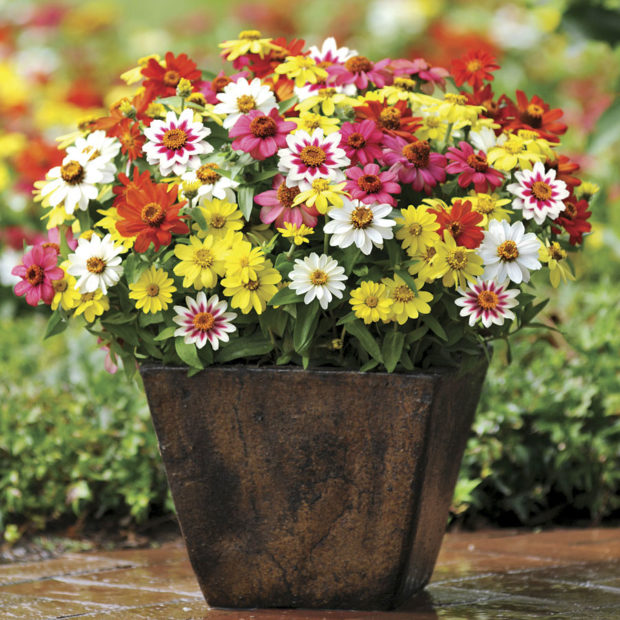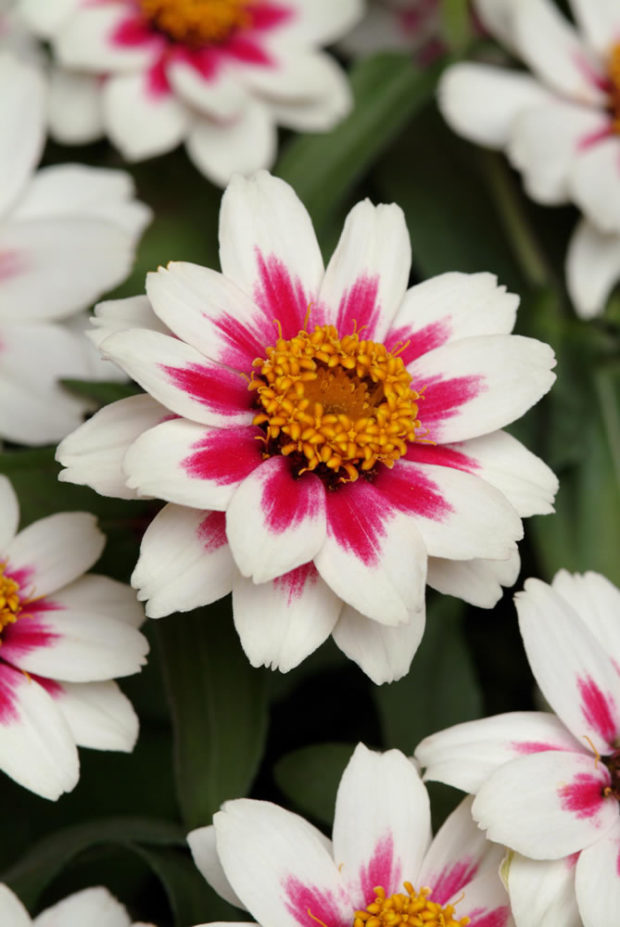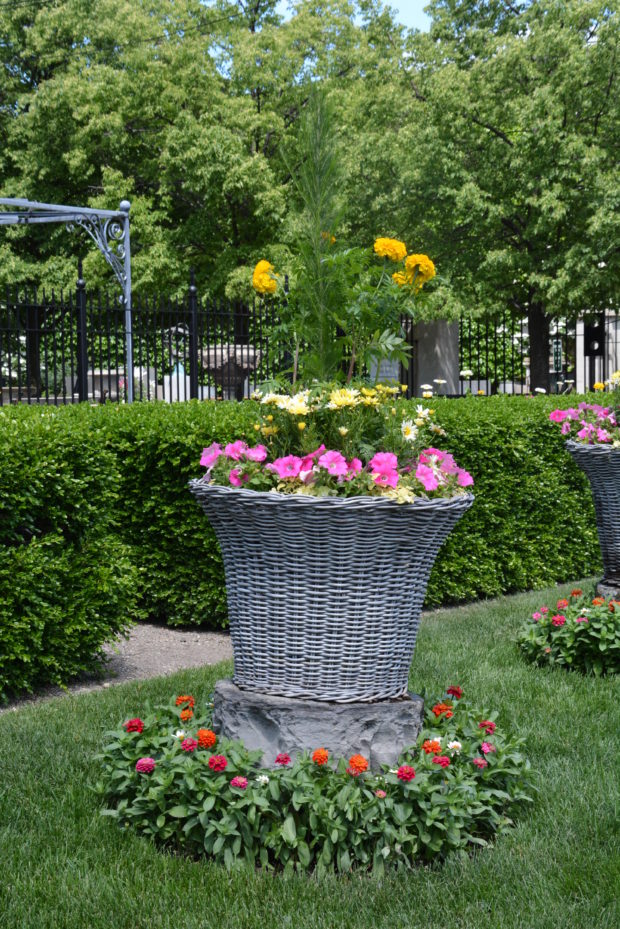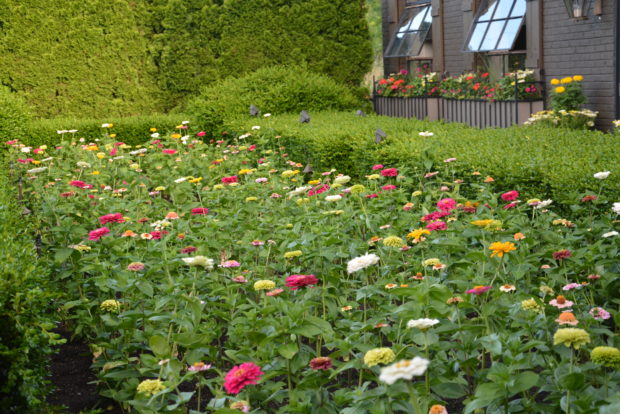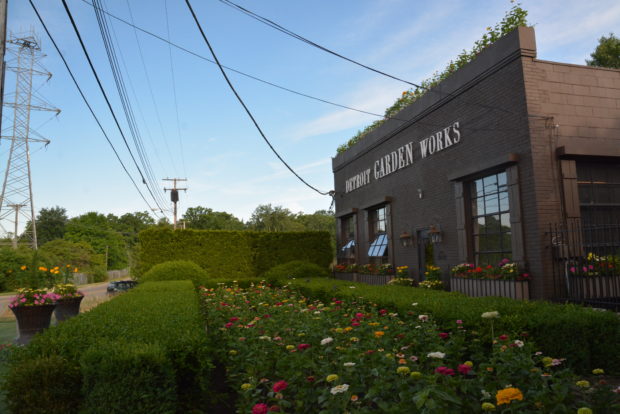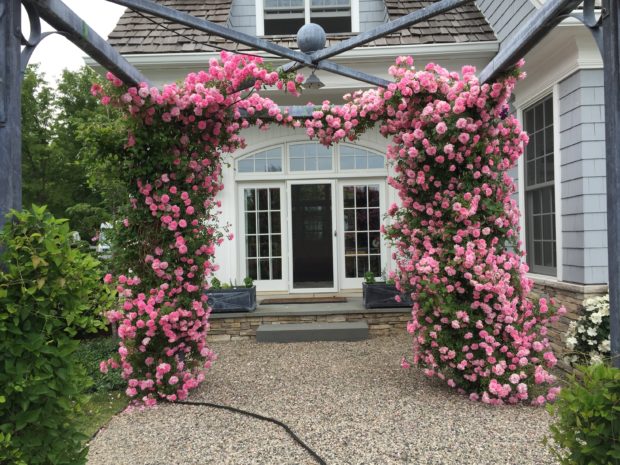 One of the many benefits of planting summer containers for a client that has had a landscape and garden designed and installed by us is the chance to see how that landscape is growing on. This client is 45 minutes away, so my visits are not all that often. I will drive out whenever there is a problem that needs some attention. But this yearly visit is never about trouble. It is about adding some seasonal plants to a garden that is the apple of its owner’s eye. She not only looks after it, she truly enjoys every bit of it. Planting her containers in June is a pleasure. The soil is warm, and the plants that have spent the early weeks of the summer protected from unpredictable weather in a greenhouse look great, and will handle the transplanting without issue. Though we planted 21 containers today, the big news of the day were the John Davis roses.
One of the many benefits of planting summer containers for a client that has had a landscape and garden designed and installed by us is the chance to see how that landscape is growing on. This client is 45 minutes away, so my visits are not all that often. I will drive out whenever there is a problem that needs some attention. But this yearly visit is never about trouble. It is about adding some seasonal plants to a garden that is the apple of its owner’s eye. She not only looks after it, she truly enjoys every bit of it. Planting her containers in June is a pleasure. The soil is warm, and the plants that have spent the early weeks of the summer protected from unpredictable weather in a greenhouse look great, and will handle the transplanting without issue. Though we planted 21 containers today, the big news of the day were the John Davis roses.
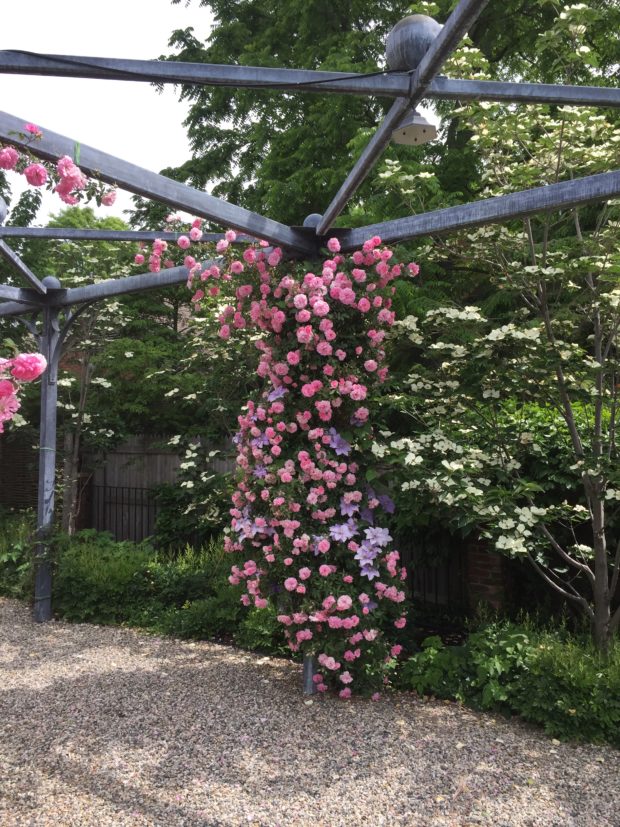 John Davis is one of the Canadian Explorer Series of extremely hardy and disease resistant roses developed by Agriculture Canada in the 1960’s. The goal was to hybridize garden roses that would not only withstand cold northern winters, but would perform beautifully in spite of it. John Davis is hardy in zone 3-think of that. There are quite a few roses in the series, all of which are good garden plants in my zone, meaning they are tough plants that shrug off the fungal diseases roses are famous for. They bloom as if there were no tomorrow. John Davis is a great choice for a not too tall climber that has the look of an old fashioned rose more often seen in England or California.
John Davis is one of the Canadian Explorer Series of extremely hardy and disease resistant roses developed by Agriculture Canada in the 1960’s. The goal was to hybridize garden roses that would not only withstand cold northern winters, but would perform beautifully in spite of it. John Davis is hardy in zone 3-think of that. There are quite a few roses in the series, all of which are good garden plants in my zone, meaning they are tough plants that shrug off the fungal diseases roses are famous for. They bloom as if there were no tomorrow. John Davis is a great choice for a not too tall climber that has the look of an old fashioned rose more often seen in England or California.
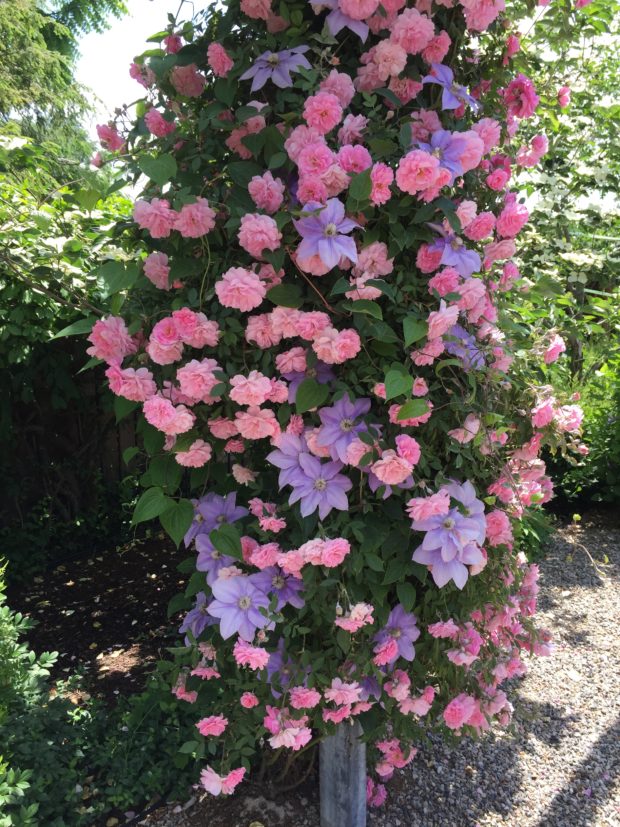 This is the 4th June for the John Davis climbing roses planted on each post of a pair of long pergolas that frame the view from the back of the house to the lake. Each was planted with a companion clematis, which range in color from white to dark purple. The clematis do not seem to mind the competition from these vigorous roses. Though John Davis usually tops out at about 7 feet, these roses are up 9.5 feet off the ground, and have started to grow over the roof of the pergola. I will be interested to see if they keep adding more height. I have planted John Davis in a number of gardens, almost all with great success. This group has seemed happy from the moment they were planted. The soil is heavy clay, and does not give its moisture up easily. There is a constant breeze from the lake, which I suspect has something to do with the fact that I never see mildew or black spot on the plants. They get a yearly dose of rose tone, and extra water when they need it. All that remains is to stand back in June, and take in the bloom.
This is the 4th June for the John Davis climbing roses planted on each post of a pair of long pergolas that frame the view from the back of the house to the lake. Each was planted with a companion clematis, which range in color from white to dark purple. The clematis do not seem to mind the competition from these vigorous roses. Though John Davis usually tops out at about 7 feet, these roses are up 9.5 feet off the ground, and have started to grow over the roof of the pergola. I will be interested to see if they keep adding more height. I have planted John Davis in a number of gardens, almost all with great success. This group has seemed happy from the moment they were planted. The soil is heavy clay, and does not give its moisture up easily. There is a constant breeze from the lake, which I suspect has something to do with the fact that I never see mildew or black spot on the plants. They get a yearly dose of rose tone, and extra water when they need it. All that remains is to stand back in June, and take in the bloom.
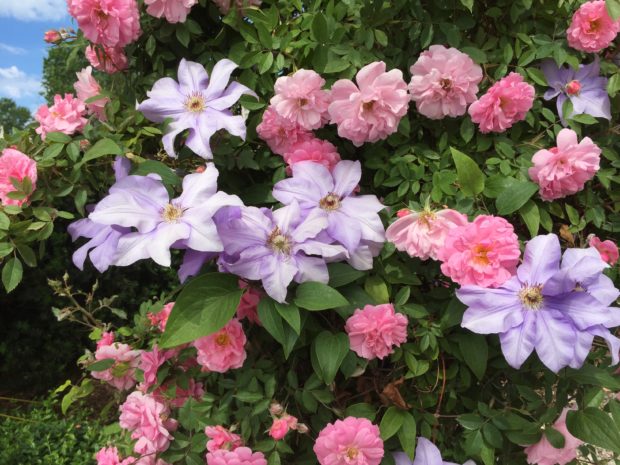 The lax canes have had some support to attach them to the pergola poles, but that is not visible. The flowers are not particularly large, but there are thousands of them on each one of these plants. I am surprised that this series of roses is not more readily available in my area. The roses we have available at Detroit Garden Works, including John Davis, had to be custom grown. I made arrangements for that almost a year ago.
The lax canes have had some support to attach them to the pergola poles, but that is not visible. The flowers are not particularly large, but there are thousands of them on each one of these plants. I am surprised that this series of roses is not more readily available in my area. The roses we have available at Detroit Garden Works, including John Davis, had to be custom grown. I made arrangements for that almost a year ago.
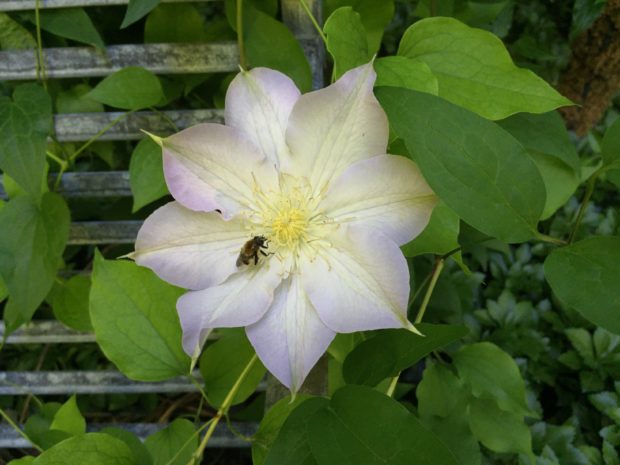 I understand the reluctance to grow roses. They are ungainly plants that no one would have, but for the bloom and perfume. They routinely fail. I mitigate that tendency by planting the graft 2 to 3 inches below ground. No gardener wants diseased plants in their garden. Choosing roses with a clear track record of resistance to disease and hardiness is educated buying. The Canadian Explorer roses might be worth a look. I find that they are reliable in every regard.
I understand the reluctance to grow roses. They are ungainly plants that no one would have, but for the bloom and perfume. They routinely fail. I mitigate that tendency by planting the graft 2 to 3 inches below ground. No gardener wants diseased plants in their garden. Choosing roses with a clear track record of resistance to disease and hardiness is educated buying. The Canadian Explorer roses might be worth a look. I find that they are reliable in every regard.
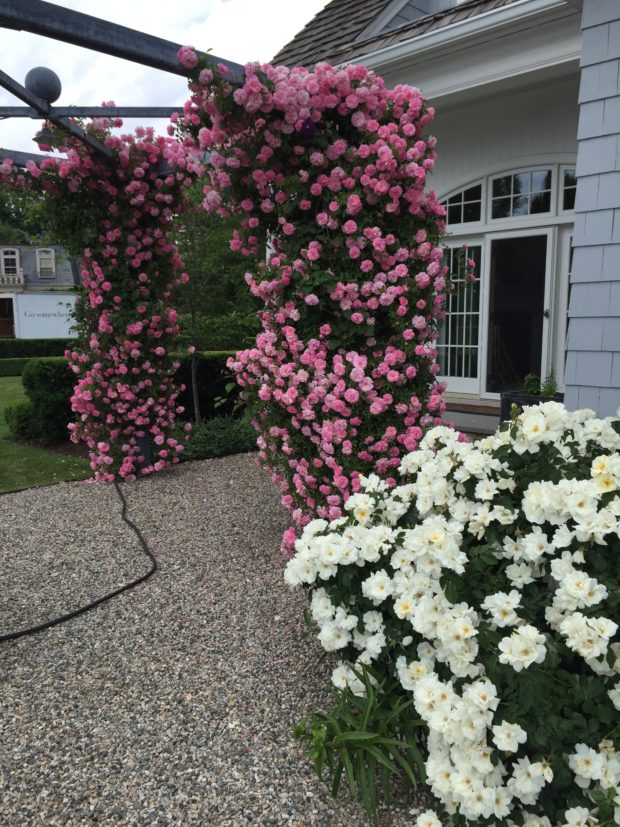 Roses in bloom like this is a garden experience like no other for a gardener who greatly values romance. Roses invoke romance like no other garden plant. I would go on to say that the big idea here is that any garden plant in the right place and endowed with the proper care will thrive. So much about the success of a garden depends on a thorough understanding of the horticultural requirements. I am rarely perfect in this regard. I have been known to short some greatly needed sun to sun loving perennials. I have placed my share of part sun perennials in shade that is too deep. I have exposed shade plants to blistering sun, in the hopes they will adjust. I have planted perennials that require perfect drainage in soggy soil, in hopes I could skate by. Suffice it to say that everything I have leaned about planting perennials has come from the plants. Any plant that is unhappy will speak back to me, if I am inclined to observe, and listen.
Roses in bloom like this is a garden experience like no other for a gardener who greatly values romance. Roses invoke romance like no other garden plant. I would go on to say that the big idea here is that any garden plant in the right place and endowed with the proper care will thrive. So much about the success of a garden depends on a thorough understanding of the horticultural requirements. I am rarely perfect in this regard. I have been known to short some greatly needed sun to sun loving perennials. I have placed my share of part sun perennials in shade that is too deep. I have exposed shade plants to blistering sun, in the hopes they will adjust. I have planted perennials that require perfect drainage in soggy soil, in hopes I could skate by. Suffice it to say that everything I have leaned about planting perennials has come from the plants. Any plant that is unhappy will speak back to me, if I am inclined to observe, and listen.
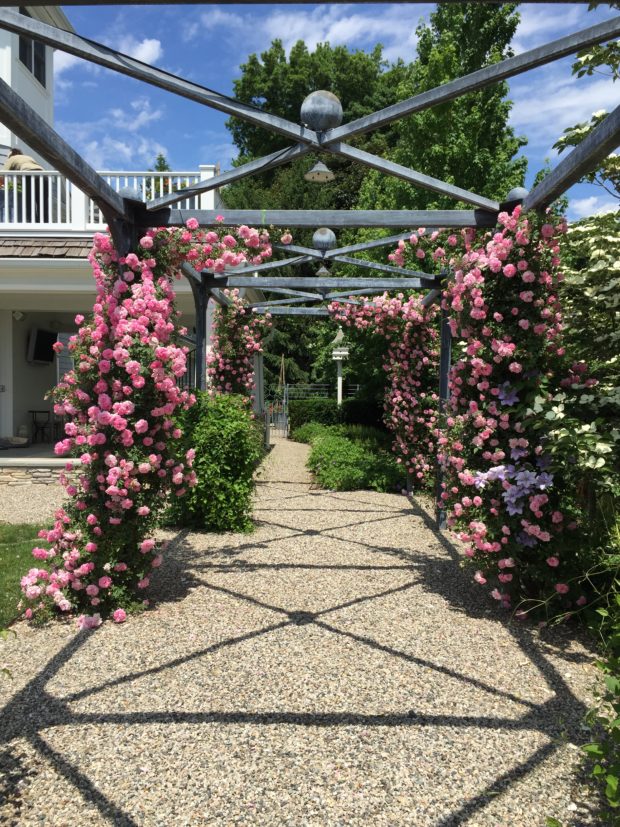 These John Davis roses in bloom are extraordinary. I can only claim that I somehow managed to put the right plant in the right place, in the beginning. What had happened over the past 4 years is a constellation of events attended by nature, and looked after by an extraordinary client. This does not happen so often. Thanks, Harriet.
These John Davis roses in bloom are extraordinary. I can only claim that I somehow managed to put the right plant in the right place, in the beginning. What had happened over the past 4 years is a constellation of events attended by nature, and looked after by an extraordinary client. This does not happen so often. Thanks, Harriet.
 The day planting containers here was a moment I shall not soon forget.
The day planting containers here was a moment I shall not soon forget.
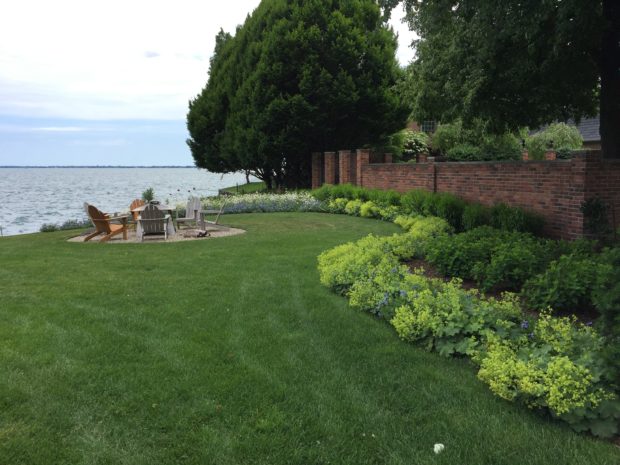 The greater garden is just as beautiful.
The greater garden is just as beautiful.
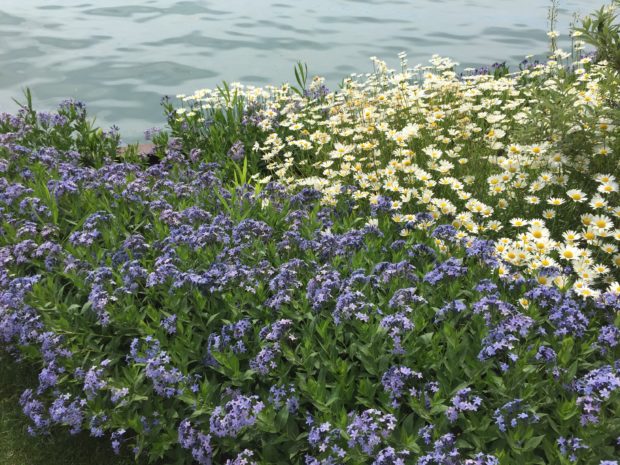 oxeye daisies and amsonia “Blue Ice”
oxeye daisies and amsonia “Blue Ice”
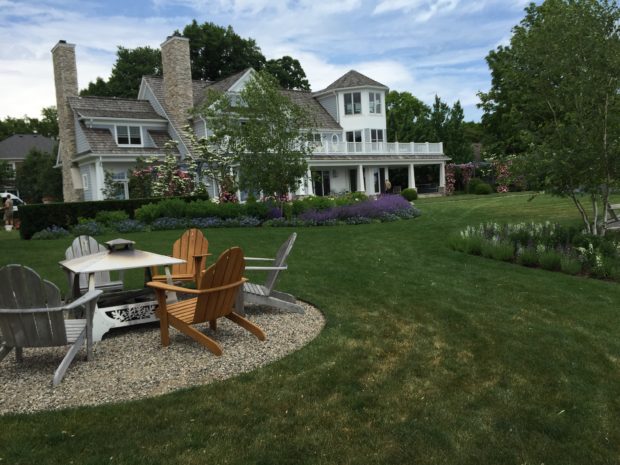 A June garden-what could be better?
A June garden-what could be better?
